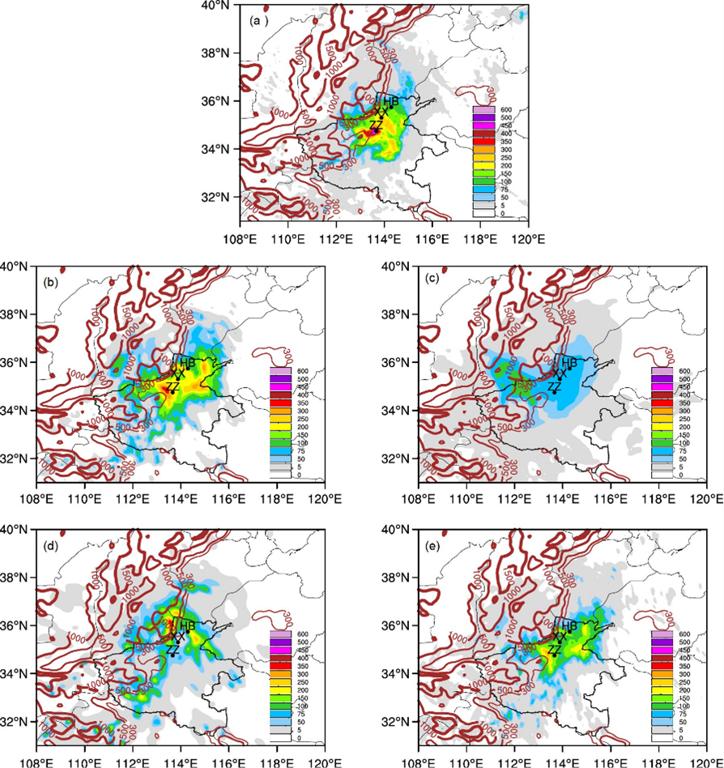A research team focused on the extreme rainfall event of "21·7" in Henan in 2021. By analyzing anomalous physical characteristics and understanding multi-model forecast biases, they significantly enhanced the accuracy of precipitation intensity forecasts. This improvement was achieved by incorporating optimization metrics and constraints better suited to the physical and data characteristics of precipitation into the neural network loss function.

Specifically, by utilizing the non-differentiable multi-threshold TS mean as the loss function and BIAS as the constraint, the research team optimized model parameters using a multi-objective optimization immune evolutionary algorithm. This approach achieved significant results in both the near real-time rolling correction of the "21·7" extreme rainfall event forecast and the correction based on long-term historical precipitation sequences.
The model, through learning the relationship between anomalous physical characteristics and heavy precipitation, significantly improved the intensity of precipitation forecasts. However, adjusting the precipitation distribution proved challenging and often resulted in substantial false alarms. This is due to the large-scale information contained in the stable anomalous circulation and physical characteristics during extreme rainfall events, which aligns with the model's precipitation biases, coupled with the scarcity of extreme rainfall samples, leading to the use of algorithms with lower complexity.
By employing machine learning to integrate multiple precipitation forecasts, the potential exists to extract the advantages of the detailed structures in each forecast, thereby significantly improving the accuracy of precipitation distribution forecasts. However, the enhancement in precipitation intensity remains limited. Integrating "good and different" multi-model forecasts with appropriate anomalous features can achieve a comprehensive adjustment of both precipitation distribution and intensity.
Future research should focus on how to fully utilize multi-source observations from satellites, radars, and other instruments to understand the bias characteristics and physical causes of multi-model precipitation forecasts. It is worth exploring the introduction of higher-dimensional multi-model features and anomalous physical characteristics closely related to heavy precipitation.
Developing network models that comprehensively represent multi-model information and anomalous features, thereby achieving a deep integration of physical and intelligent technologies, is a crucial direction for enhancing heavy precipitation forecasting in the future.
The paper is published in the journal Science China Earth Sciences. This study was led by Professor Qi Zhong and Professor Xiuping Yao from the China Meteorological Administration Training Center, and Assistant Engineer Zhicha Zhang from the Zhejiang Meteorological Observatory, along with other research team members.
Sources:
PHYS.ORG
https://phys.org/news/2024-08-extreme-rainfall-event-physics-machine.html .
Provided by the IKCEST Disaster Risk Reduction Knowledge Service System
Comment list ( 0 )
